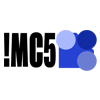Software Tips
What is EDI?
Electronic Data Interchange (EDI) refers to the electronic exchange of business documents such as invoices, purchase orders, delivery bills, delivery orders and so on. EDI replaces the otherwise customary paper exchange between business partners. Structured data is exchanged electronically between partners using specific message standards. EDI itself does not refer to a technology, but to the concept of electronic data exchange. For the actual application, communication protocols (exchange protocols) and document standards or message standards are required. The connection can be made via three different methods: in-house operation, WebEDI or EDI outsourcing.

Graphic: Message exchange between companies
Advantages of EDI
There are various advantages for companies resulting from the use of EDI compared to the paper-based exchange of documents. These include, first and foremost, faster transmission times and reduced turnaround times, as well as shortened processes overall. At the same time, the accuracy of the information increases, as transmission errors are significantly reduced. Thanks to electronic transmission, the information is not only available more quickly, but also in a more structured form, which simplifies the processing and also the evaluation of the business data. In addition to cost savings and increased efficiency, the use of EDI generally ensures a general optimization of company processes.
EDI standards
There are numerous EDI message standards. These standards are often industry-specific, such as SWIFT for banks. International EDI standards that are used across industries include UN/EDIFACT (EDI for Administration, Commerce and Transport).
This EDI standard comprises numerous so-called subsets that are used on an industry-specific basis. The UN/EDIFACT subsets include EANCOM for the consumer goods industry, CEFIC for the chemical industry and EDITRANS for the transport industry.
How EDI works
A document is generated for the electronic data exchange. This can be, for example, the delivery bill or the invoice. The document is usually generated from enterprise resource planning. Depending on the software used, the document standard can be a proprietary format such as iDoc from SAP or a standard format such as UN/EDIFACT. An EDI interface is required to transfer the data to other systems. This is usually available as an EDI module for merchandise management or ERP.
The recipient of the document may use a different document standard than the sender uses. An EDI converter is used for this purpose. By using the EDI converter, the constant adaptation of the EDI interface of the company's own ERP or merchandise management system is bypassed. When the document reaches the recipient, it is usually adapted to the data structure of the recipient's software and processed further.

Graphic: EDI procedure
Common message formats of UN/EDIFACT
Different business processes can be mapped with EDIFACT message formats. There are over 200 such EDIFACT formats available. The messages are identified with a unique six-digit abbreviation. The most common messages include purchase order (ORDERS), invoice and credit bill (INVOIC), despatch advice / delivery bill (DESADV), customs declaration (CUSDEC) and order confirmation (ORDRSP).
A list with all currently possible six-digit messages can be found at the United Nations Economic Commission for Europe (UNECE). The EDIFACT message formats are completely independent of the transmission or communication protocol used.

Graphic: Examples of message formats
EDI communication protocols
NBesides the standards and message formats, the EDI communication protocol plays an important role in the EDI process. These transmission protocols determine the way in which the EDI documents are to be exchanged.
Common EDI protocols include:
- AS1, AS2, AS3, AS4
- OFTP, OFTP2
- FTP, SFTP, FTPS
- HTTP, HTTPS
- X.400 (E-mail protocol)
Transmission protocols are only about how the document gets from the sender to the recipient.
AS2 (Applicability Statement 2) is a secure transmission method in which an envelope is created, so to speak, for the actual message, which is then transmitted securely over the Internet. The message is digitally signed and encrypted. The sender receives a digital confirmation of receipt (Message Disposition Notification MDN) and can thus prove timely delivery if required.
AS4 (Applicability Statement 4) is based on web services. In addition to the possibilities of AS2, AS4 also includes pull support in addition to the push function. This means that it is not only possible for the sender to send messages and receive a digital acknowledgement of receipt, but also for the addressee to actively pick up messages. The AS4 server is permanently available for this purpose. AS4 recipients can return or forward messages. EDI messages cannot be modified during transmission. Confidentiality can be ensured by means of modern crypto procedures. AS4 also enables an automated duplicate check.
The AS4 protocol is used, among other things, for communication in the energy sector (ENTSOG), in the area of international award procedures (PEPPOL).
Tips and question suggestions
More tips and question suggestions for evaluating EDI business processing software
- Check which communication standards are mapped! Are the standards relevant for your industry (e.g. AS4 for market communication in the electricity sector) supported?
- Ask which interfaces the EDI software includes. The software must be able to exchange data with third-party software such as ERP, inventory management or e-commerce applications.
- Pay attention to the security standards of the EDI software or the EDI provider. The software should reflect the current security standards and ensure security in the transmission of EDI messages. The messages should also be stored encrypted in the memory.
- Consider whether you want to use on-premises EDI software or outsource EDI and choose an EDI service provider. Outsourcing is particularly suitable if you only exchange a few EDI messages per day.
- Find out how the transaction activity is presented! For example, is there a dashboard or monitor that gives you an overview of transactions? Can messages be displayed as PDFs via this monitor, sent via e-mail, or downloaded directly?
- Does the software offer audit-proof archiving? Ask the provider whether all relevant data (EDI message, communication log, corresponding ERP file) is stored in an archive. Are there special archive workflows that can be set up?
- Ask the EDI software provider if you will be notified if errors occur in the supply chain. Notifications are important so that you can react quickly when errors occur.
 The electronic exchange of all business documents can be carried out with Logipad, the flexible information management solution. In particular, the seamless integration into IT structures and the continuous data synchronization are very advantageous.
The electronic exchange of all business documents can be carried out with Logipad, the flexible information management solution. In particular, the seamless integration into IT structures and the continuous data synchronization are very advantageous. As communication software and EDI converter or EDI interface, !MC5 (formerly Odette MC) offers a wide range of innovative functions and numerous options for the flexible connection of the ERP software to the outside world. !MC5 includes features for data exchange according to common standards (OFTP, OFTP2, etc.), support for the transfer of CAD/CAM data (ENGDAT, ENGPART) as well as the processing and conversion of EDI data (UN/EDIFACT, VDA, ASC X12, etc.).
As communication software and EDI converter or EDI interface, !MC5 (formerly Odette MC) offers a wide range of innovative functions and numerous options for the flexible connection of the ERP software to the outside world. !MC5 includes features for data exchange according to common standards (OFTP, OFTP2, etc.), support for the transfer of CAD/CAM data (ENGDAT, ENGPART) as well as the processing and conversion of EDI data (UN/EDIFACT, VDA, ASC X12, etc.).

